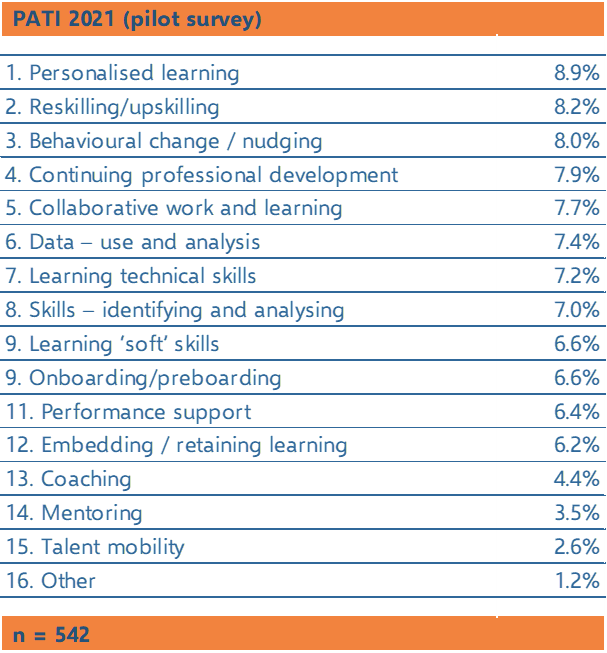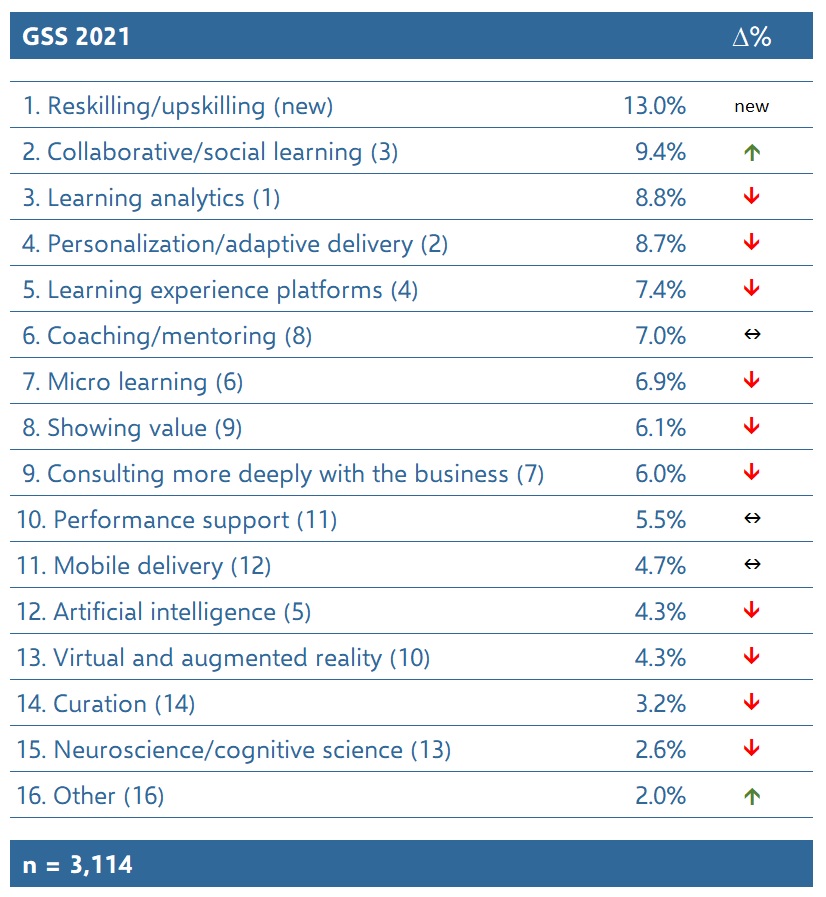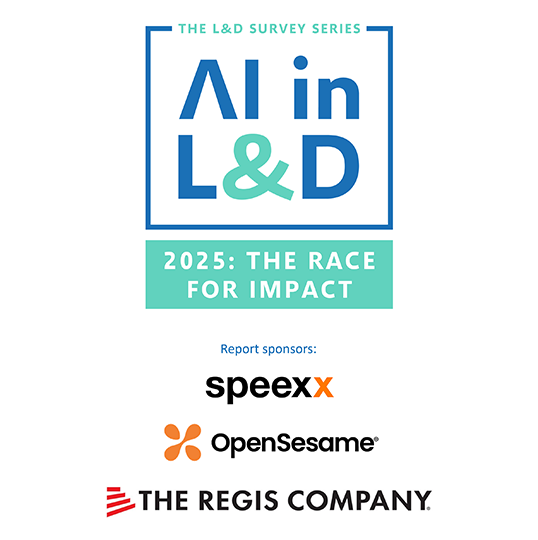Innovation in L&D and HR part 1

This summer I piloted a new survey, the People And Technology Innovation survey (PATI). The approach is similar to my annual winter L&D Global Sentiment Survey (GSS), with one major difference.
Where the GSS focuses on sentiment – what people feel will be hot in L&D the following year – the PATI examines what people are actually doing that is innovative. Although there is no explicit link between the two surveys, naturally I am interested to see which trends picked up by the GSS are echoed by the PATI: if something is considered hot by GSS respondents one year, does that later translate into action?
This blog gives an overview of the survey and the results. Subsequent blogs will look at some of the detail. Because this was a pilot survey, I won’t be publishing a full report, but will next year, when I re-run the survey with a slightly altered methodology.
If you want an ultra summary, here it is:
The ideas that are most popular in the Global Sentiment Survey appear to surface as areas of innovation in practice, after a lag of a year or more. Caveat: all of this is self-reported.
There are a slew more caveats at the end of this blog.
The basics
The 2021 pilot PATI survey ran from 16 August to 3 October 2021, and attracted 542 responses from 50 countries. People were invited to respond via a combination of social media and direct email. Participation was anonymous, with the option to share an email address.
PATI 21 asked one obligatory question: Which HR/L&D issues are you looking to solve with innovative technologies? The aim in asking a single obligatory question is to make it easy to answer the survey quickly, ensuring a large data set to work with.
The questions
In response to the question Which HR/L&D issues are you looking to solve with innovative technologies? respondents were given a list of 15 options to choose from, plus a free-text ‘other’ option. The list of options was randomized for each respondent:
- Behavioural change / nudging
- Coaching
- Collaborative work and learning
- Continuing professional development
- Data – use and analysis
- Embedding / retaining learning
- Learning ‘soft’ skills
- Learning technical skills
- Mentoring
- Onboarding/preboarding
- Performance support
- Personalised learning
- Skills – identifying and analysing
- Talent mobility
- Reskilling/upskilling
There were 4 other, optional questions, plus a final option to share an email address if respondents wanted to stay in touch:
- What are you doing that is innovative? (Free text)
- What challenges do you face carrying out this innovation? (Free text)
- What exciting start-ups/early stage companies are you working with in learning or HR? (Free text)
- Which of these best describes where you do you most of your work? (6 choices)
The overall results
Question: Which HR/L&D issues are you looking to solve with innovative technologies?

Because this was a pilot survey, I placed no limit on the number of options a respondent could choose. I wanted to see what people’s behaviour would be. (Note: this makes direct numeric comparisons between this table and the apparently similar one for the L&D Global Sentiment Survey impossible.) It seemed people believed they were innovating quite widely. The average number of options chosen per respondent was 4.8, and while the majority (356, or 64%) chose 5 options or fewer, over a third chose 6 or more. A few ticked every option.
Is it credible that an organisation or individual can truly be innovative is so many areas at once? Only, perhaps, with a very loose definition of innovation. Next year’s survey will almost certainly include a cap on the number of options which can be selected.
First observations
Not only is a direct numeric comparison between the tables for PATI and GSS impossible, the options themselves are different. Where the options are the same or very similar, however, I have found it illuminating to look at the relative positions on the table of options which can be found on both tables. Here, I’ll look at three such options:
Personalised learning tops the PATI table overall (and is #1 in Europe, #2 in the UK). On the GSS, Personalization/adaptive delivery topped the table from 2017 to 2019, falling to #2 in 2020 and #3 this year.
Reskilling/upskilling was the runaway leader of the GSS for 2021, but comes second on the PATI table.
Collaborative work and learning ranks #5 on the PATI table. On the GSS, Collaborative/social learning has never been lower than #4 and was the only option to increase its share of the vote in the 2021 survey.

The first observation is that there is a clear, loose correlation in ranking on these three options on the GSS and PATI survey. They rank highly on each table. There is a caveat here, though. These categories – personalisation, collaboration, reskilling and upskilling – are broad, and it is quite possible that people may, without any malicious intent, label their activity with one of these terms, while others would not consider them as belonging to those, or perhaps any, category of innovation. Given the popularity of these terms over recent years, we should expect that this will happen. This will be the subject of a future blog.
The second observation is that there appears to be some sort of lag between the GSS and the PATI. Something is initially seen as important among the innovators and early adopters who typically answer the GSS. Later, some practitioners take action and innovate around these ideas, as observed on the PATI survey. In coming years, I hope to build up enough data to test this hypothesis.
The next blog looks at the variation across regions and ask why the UK’s results seem so very different from the rest of the sample.
Caveats
In considering these survey results, please remember the following caveats:
- Respondents are a self-selecting group, so may not represent the overall population of L&D and HR professionals
- ‘Innovation’ is not defined. What may be innovative to one person may not be another.
- Options on the list are not defined, so we cannot guarantee that respondents all understand the same option in the same way.
- The survey is only in English, so native and non-native speakers may interpret the meaning of the same option differently
- Because of the nature of the invitation to participate – via social media and via email – respondents are likely to be more tech-savvy than the general L&D/HR population
- Respondents are unqualified – the survey is open to anyone with the URL, so we cannot be sure that participants are necessarily engaged in L&D or HR at all.


